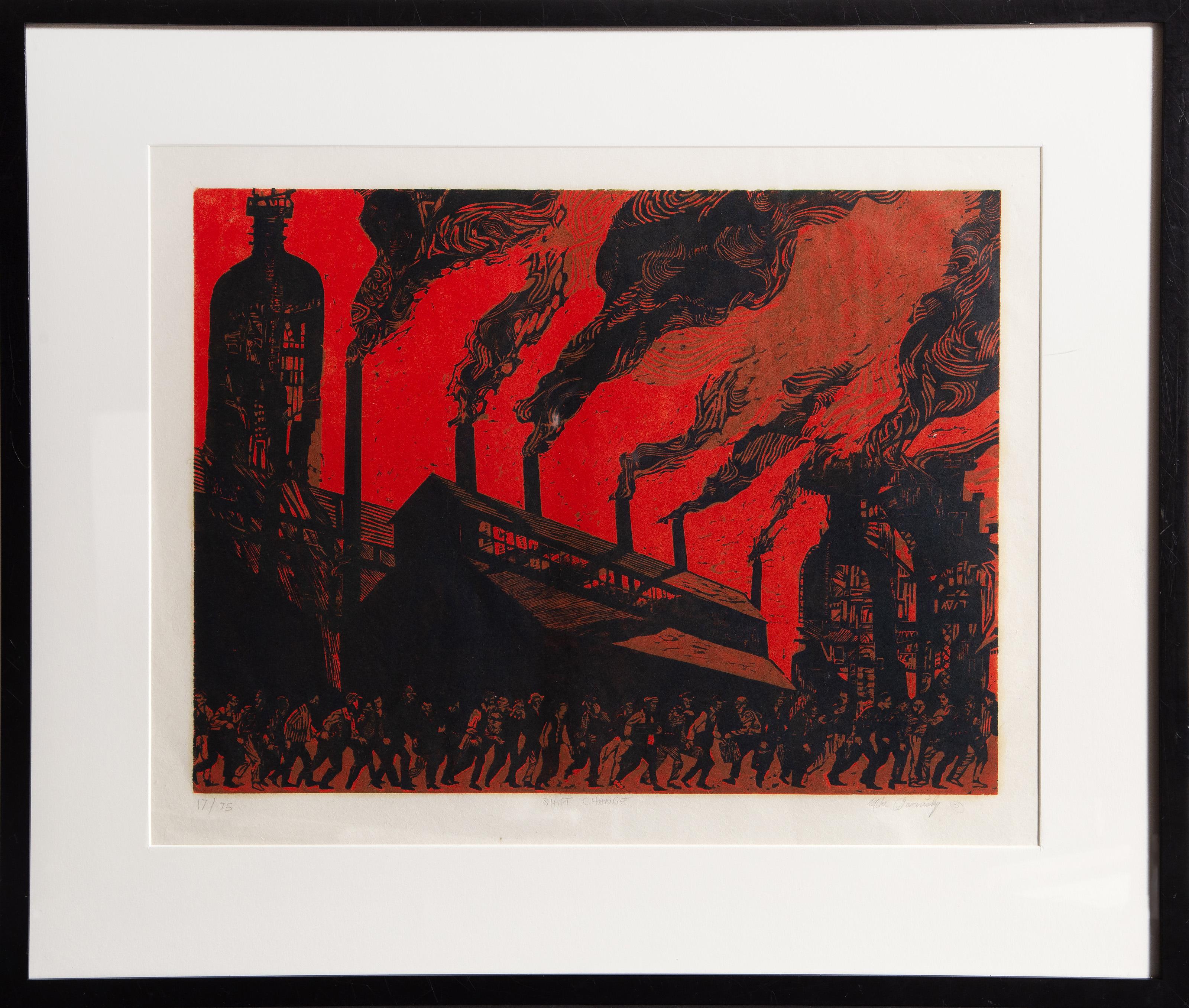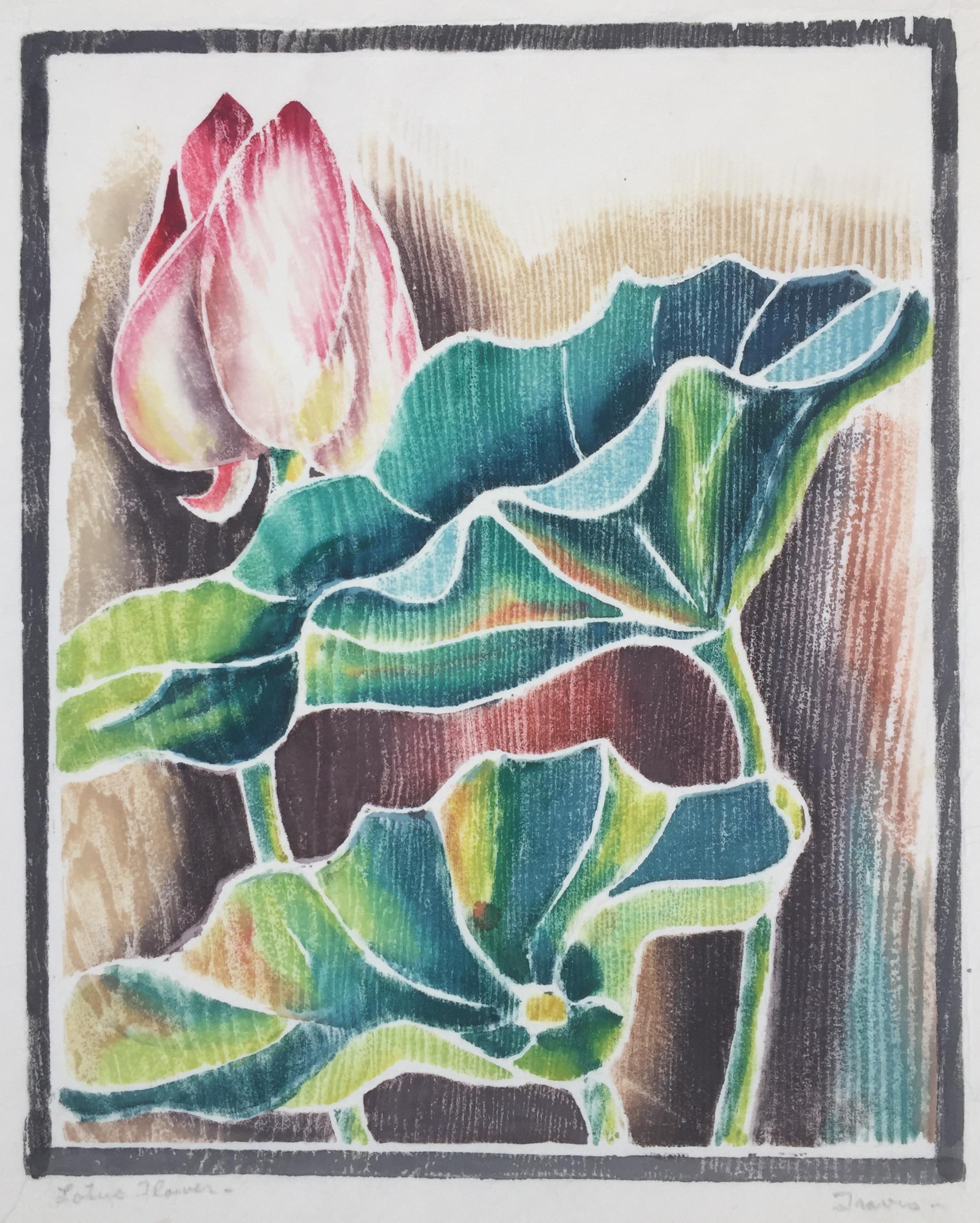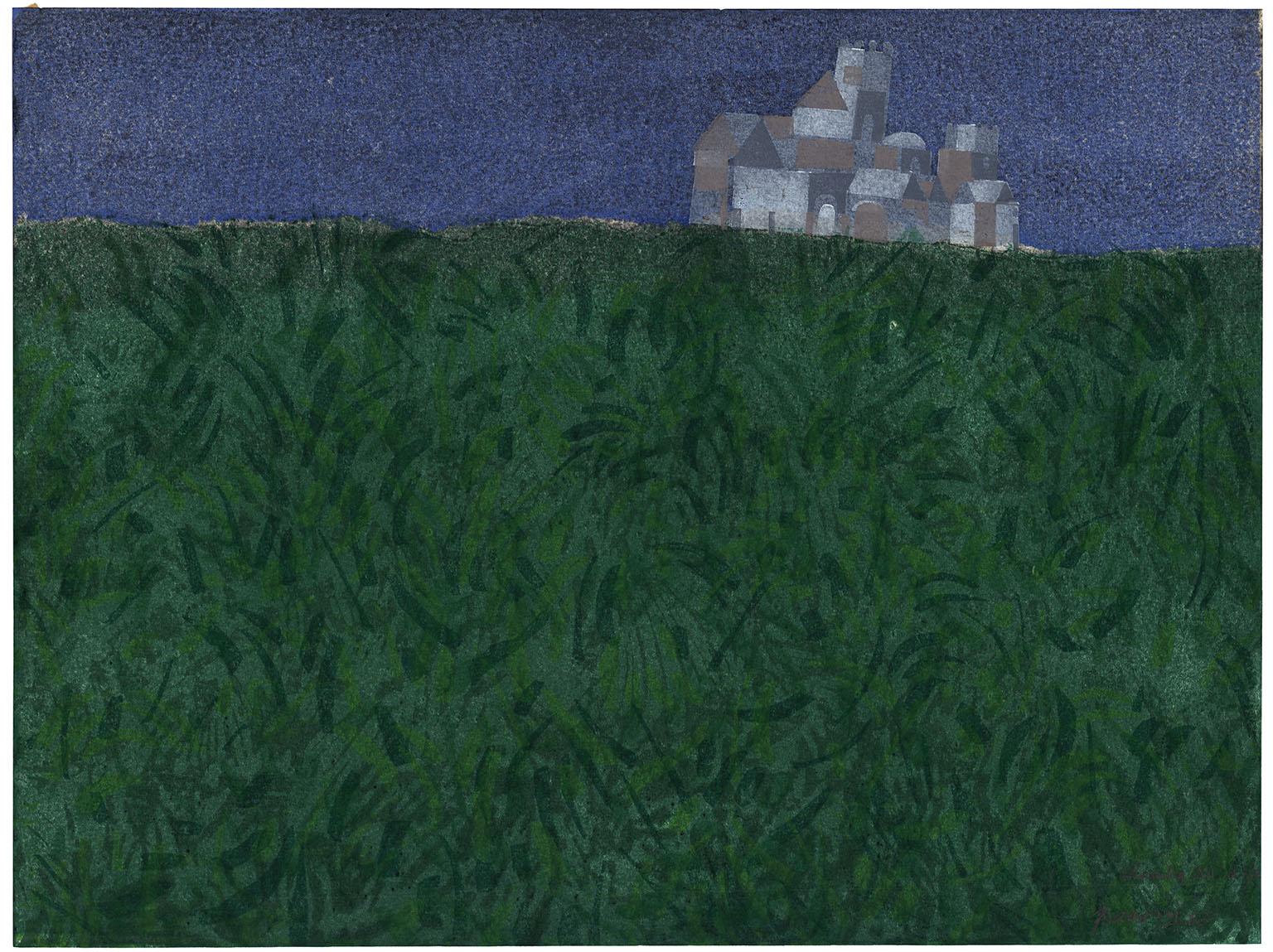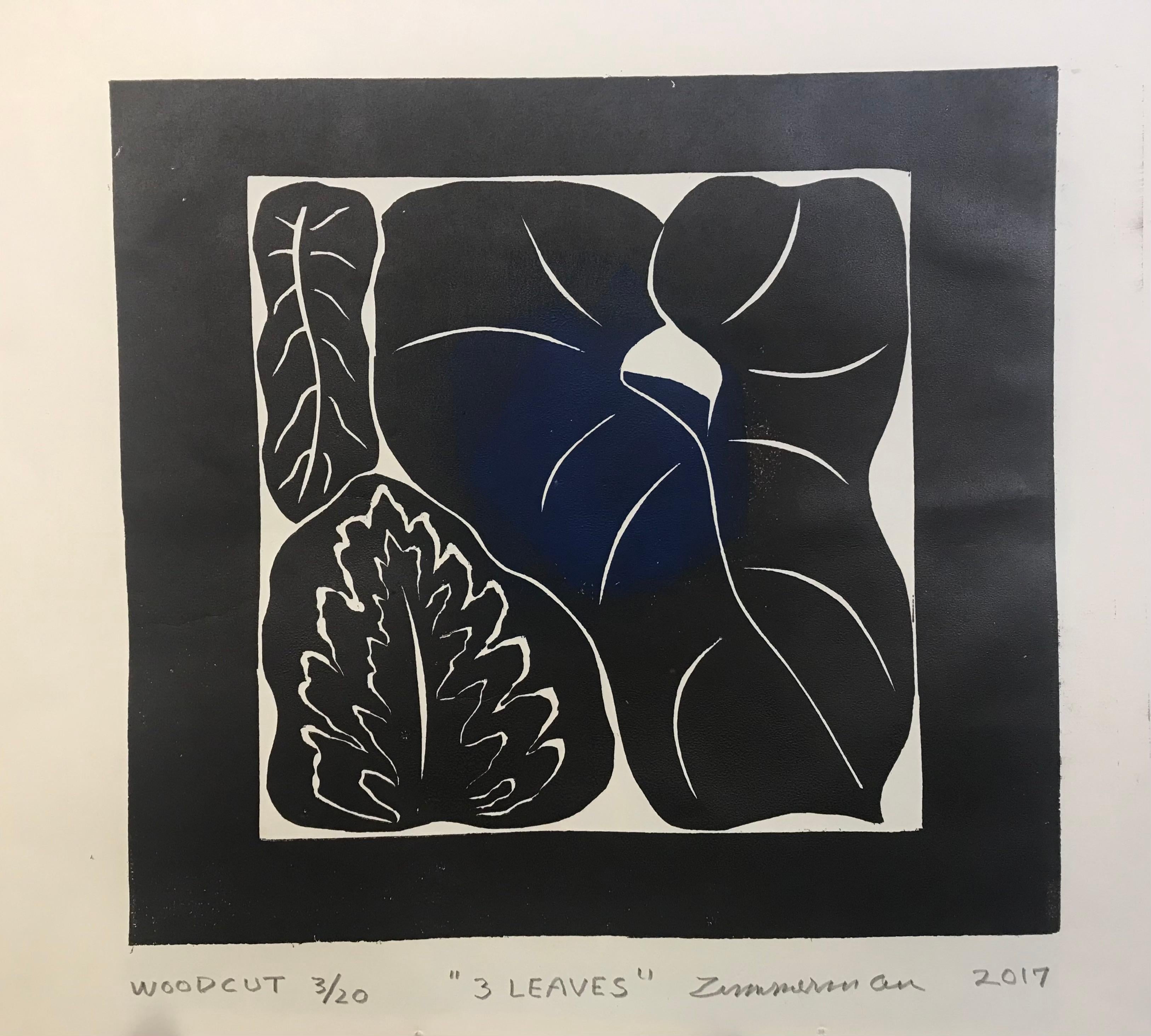Howard Norton CookChrysler Building (Chrysler Building in Construction) 1931
1931
About the Item
- Creator:Howard Norton Cook (1901-1980, American)
- Creation Year:1931
- Medium:
- Movement & Style:
- Period:
- Condition:
- Gallery Location:New York, NY
- Reference Number:1stDibs: LU51531509003
Howard Norton Cook
Howard Norton Cook left his childhood home in Springfield, Massachusetts in 1919 to receive formal training in New York at the Art Students League. While in New York, Cook studied under George Bridgman and attended an experimental class with Max Weber and Andrew Dasburg. He spent his time between sessions painting outdoor billboards and working in lithography and photo-engraving shops. In 1922, Cook began work as an illustrator, contributing woodcuts and drawings to Harper's, Scribner's, Survey, Atlantic Monthly, and Forum. Various assignments allowed him to travel all over the world. Cook was on assignment for Forum to illustrate the serialization of Willa Cather's Death Comes to the Archbishop when he first visited New Mexico in 1926. Cook remained in New Mexico for a year and a half, during which time he met and married artist Barbara Latham. During the next few years, the couple traveled to Paris where Cook studied in a prominent lithographic workshop; to Taxco, Mexico, where he studied fresco painting on a Guggenheim fellowship; and to the Deep South of the United States on a second Guggenheim fellowship. In 1935, Cook and Latham settled in Taos, New Mexico. By that time, Cook had been represented in 50 Prints of the Year several times, yet his focus turned to fresco painting. He traveled across throughout the United States on mural commissions and, in 1937, the Architectural League of New York awarded Cook the Gold Medal for mural painting. Cook later served in the Navy as an artist-war correspondent in the South Pacific. His paintings from that period were exhibited in the National Gallery in Washington, D.C., and later displayed across the U.S. in a traveling exhibition funded by the War Department. After returning from the war, Cook produced several powerful lithographs depicting his experiences in the South Pacific. In 1949, he was elected to membership in the National Academy as a graphic artist. During the 1940's, Cook was known for his watercolors set in New Mexico. Later paintings in oil became increasingly abstract. Some of the artist's favorite subjects included Southwestern landscapes and Indian dances that focused on conveying a strong sense of movement. Throughout his career, Cook was a guest professor at many art schools and universities. In 1967, he became the first artist in residence at the Roswell Museum, Roswell, NM. Howard Cook remained in New Mexico until his death in 1980. ©David Cook Galleries, LLC
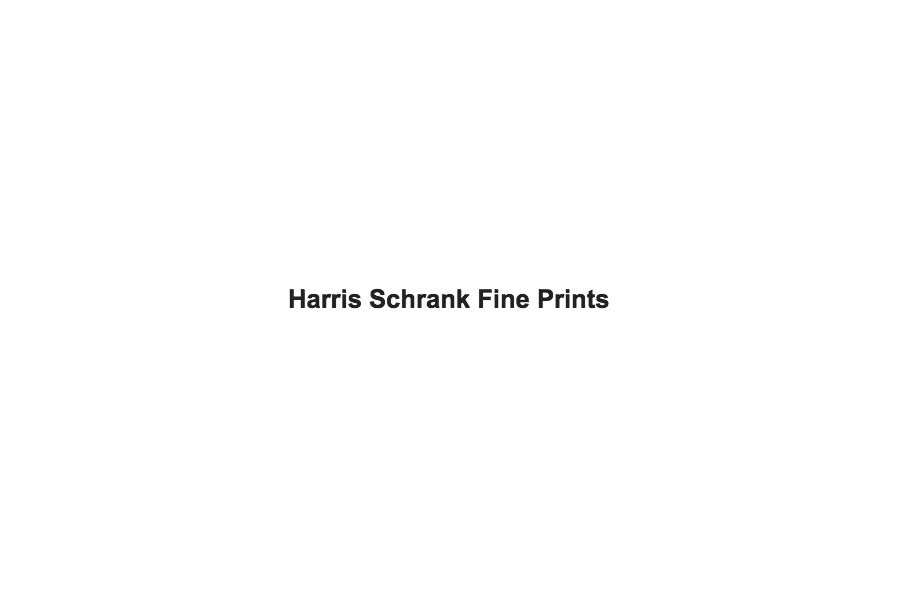
- ShippingRetrieving quote...Ships From: New York, NY
- Return PolicyA return for this item may be initiated within 7 days of delivery.
- Eight-thirty ExpressBy Letterio CalapaiLocated in New York, NYLetterio Calapai (1902-1993), Eight-Thirty Express, wood engraving, 1943, signed and dated ’43 lower right, titled and inscribed trial proof 3 bottom left in pencil [with the monogra...Category
1940s American Modern Landscape Prints
MaterialsEngraving, Woodcut
- Financial DistrictBy Howard Norton CookLocated in New York, NYHoward Cook (1901-1980), Financial District, lithograph, 1931, signed and dated in pencil lower right and numbered 75 lower left. Reference: Duffy 155, from the stated edition of 75....Category
1930s American Modern Landscape Prints
MaterialsLithograph
- Coin de Rue Dans SohoBy Jean-Emile LaboureurLocated in New York, NYJean-Emile Laboureur (1877-1947), Coin de Rue Dans Soho, woodcut, 1909, signed in pencil lower left and numbered (15/15) [also initials in the plate]. Reference: Sylvain Laboureur 64...Category
Early 1900s Modern Landscape Prints
MaterialsWoodcut
- Farm in the WoodsBy Werner DrewesLocated in New York, NYWerner Drewes (1899-1983), Farm in the Woods, woodcut, 1933, signed and dated in pencil lower right (also numbered 1-xxx and titled lower left). Reference: Rose 83. In very good cond...Category
1930s American Realist Landscape Prints
MaterialsWoodcut
- Kreuzende Segelschiffe 2 (Cruising Sailing Ships 2)By Lyonel FeiningerLocated in New York, NYLyonel Feininger, “Kreuzende Segelschiffe 2 (Cruising Sailing Ships 2)” 1919, Woodcut. Prasse W175. Edition 275 unsigned for portfolio Die tunlte Jahresgabe des Kreises graphischer ...Category
1910s Bauhaus Landscape Prints
MaterialsWoodcut
- L’Auberge du Bord de L’Eau (Petite Planche)By Jean-Emile LaboureurLocated in New York, NYJean-Emile Laboureur (1877-1943), L’Auberge du Bord de L’Eau (Petite Planche), engraving, 1924, signed in pencil lower left, numbered lower right ((41/60), and titled in pencil by th...Category
1920s Modern Landscape Prints
MaterialsEngraving
- Shift Change, Social Realist Woodblock Print by Mike GoscinskyLocated in Long Island City, NYShift Change Mike Goscinsky, American (1933–2021) Woodblock on thin wove paper, signed, titled and numbered in pencil Edition of 15/75 Image Size: 14 x 19 inches Size: 22 x 26.5 in. ...Category
1990s American Modern Landscape Prints
MaterialsWoodcut
- 'Taos Placita' — 1940s Southwest RegionalismBy Gustave BaumannLocated in Myrtle Beach, SCGustave Baumann, 'Taos Placita', color woodcut, 1947, edition 125. Baumann 132. Signed, titled, and numbered '20-125' in pencil; with the artist’s Hand-in-Heart chop. A superb, richly-inked impression, with fresh colors, on fibrous oatmeal wove paper; the full sheet with margins (2 to 3 1/8 inches); slight rippling at the left sheet edge, in excellent condition. Matted to museum standards, unframed. Image size 9 5/8 x 11 1/4 inches (244 x 286 mm); sheet size 13 1/4 x 17 inches (337 x 432 mm). Collections: New Mexico Museum of Art, Phoenix Art Museum, Wichita Art Museum. ABOUT THE ARTIST Gustave Baumann (1881-1971) was a renowned printmaker and a leading figure of the American color woodcut revival whose exquisite craftsmanship and vibrant imagery captured the essence of the Southwest. "A brilliant printmaker, Baumann brought to the medium a full mastery of the craft of woodworking that he acquired from his father, a German cabinetmaker. This craftsmanship was coupled with a strong artistic training that resulted in the handsome objects we see in the exhibition today. After discovering New Mexico in 1918, Baumann began to explore in his woodblock prints of this period the light. color, and architectural forms of that landscape. His prints of this period are among the most beautiful and poetic images of the American West." —Lewis I. Sharp, Director, Denver Art Museum Baumann, the son of a craftsman, immigrated to the United States from Germany with his family when he was ten, settling in Chicago. From 1897 to 1904, he studied in the evenings at the Art Institute of Chicago, working in a commercial printmaking shop during the day. In 1905, he returned to Germany to attend the Kunstwerbe Schule in Munich, where he decided on a career in printmaking. He returned to Chicago in 1906 and worked for a few years as a graphic designer of labels. Baumann made his first prints in 1909 and exhibited them at the Art Institute of Chicago the following year. In 1910, he moved to the artists’ colony in Nashville, Indiana, where he explored the creative and commercial possibilities of a career as a printmaker. In 1915, he exhibited his color woodcuts at the Panama-Pacific International Exposition in San Francisco, winning the gold medal. Among Baumann’s ongoing commercial activities was his work for the Packard Motor Car Company from 1914 to 1920 where he produced designs, illustrations, and color woodcuts until 1923. In 1919, Baumann’s printmaking work dominated the important exhibition of American color woodcuts at the Detroit Institute of Arts. Twenty-six of his prints were included, far more than the works of any other artist. A set of his blocks, a preparatory drawing, and seven progressive proofs complemented the exhibition. That same year, Baumann worked in New York and, over the summer, in Provincetown, Massachusetts. His airy images of Cape Cod employed soft, pastel colors and occasionally showed the influence of the white-line woodcut technique. Many of his Chicago artist friends had traveled to the southwest, and Baumann became intrigued by their paintings, souvenirs, and stories of an exotic place named Taos, New Mexico. In the summer of 1918, he spent the summer in Taos sketching and painting before visiting Santa Fe. Paul Walter, the director of the Museum of New Mexico, offered him a studio in the museum's basement. Inspired by the rugged beauty of the Southwest—the vibrant colors and dramatic landscapes of the region became a central theme in his work, influencing his artistic style and subject matter for the remainder of his career. Later in the decade, he traveled to the West Coast and made prints of California landscape. Baumann's prints became synonymous with the Southwest, capturing the spirit of its place in America's identity with a unique sense of authenticity and reverence. His iconic images of desert vistas, pueblo villages, and indigenous cultures served as visual tributes to the region's rich cultural heritage, earning him a dedicated following among collectors and curators alike. A true craftsman and artist, Baumann completed every step of the printmaking process himself, cutting each block, mixing the inks, and printing every impression on the handmade paper he selected. His dedication to true craftsmanship and his commitment to preserving the integrity of his artistic vision earned him widespread acclaim and recognition within the art world. About the vibrant colors he produced, Baumann stated, “A knowledge of color needs to be acquired since they don’t all behave the same way when ground or mixed...careful chemistry goes into the making of colors, with meticulous testing for permanence. While complicated formulae evolve new colors, those derived from Earth and metal bases are still the most reliable.” In the 1930s, Baumann became interested in puppet theater. He designed and carved his own marionettes and established a little traveling company. From 1943 to 1945, the artist carved an altarpiece for the Episcopal Church of the Holy Faith in Santa Fe. In 1952, a retrospective exhibition of his prints was mounted at the New Mexico Museum of Fine Arts. Throughout his prolific career, Baumann executed nearly four hundred color woodcuts. Baumann’s woodcuts...Category
1940s American Modern Landscape Prints
MaterialsWoodcut
- LOTUS FLOWER - ROEDING PARK - Provincetown StyleBy Mary TravisLocated in Santa Monica, CAMARY TRAVIS (Active 1935 - 40) LOTUS FLOWER ROEDING PARK. c.1935-40 White line color woodcut. Signed and titled in pencil. Small edition. 10” x 8”. Full sheet. tears in upper margin. Travis worked in Berkeley, California and was probably a follower of William S...Category
1930s American Modern Landscape Prints
MaterialsWoodcut
- LOTUS FLOWER - Provincetown StyleBy Mary TravisLocated in Santa Monica, CAMARY TRAVIS (1893-1976)) LOTUS FLOWER c. 1935-40 White line color woodcut. Signed and titled in pencil. Small edition. 9 ¾” x 7 7/8”. Full sheet. Some creasing in the margins. Travis worked in Berkeley, California and was probably a follower of William S...Category
1940s American Modern Landscape Prints
MaterialsWoodcut
- Alhambra XIIBy Antonio FrasconiLocated in New York, NYAntonio Frasconi created the color woodcut entitled “Alhambra XII” in 1963. This piece is signed titled, and dated in pencil. The edition is 12, and paper size is 18 x 24 inches. “...Category
1960s American Modern Landscape Prints
MaterialsWoodcut
- Three leaves (taro) - Landscape Print - Woodcut Print By Marc ZimmermanBy Marc ZimmermanLocated in Carmel, CAMinimal image in black ink on buff rice paper. Taro leaves are a simple form inspiring this woodcut print. Three leaves (taro) - Landscape Print - Woodcut Print By Marc Zimmerman T...Category
2010s American Modern Landscape Prints
MaterialsWoodcut
